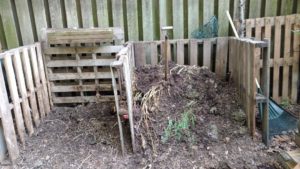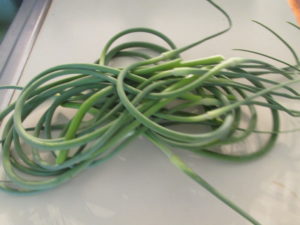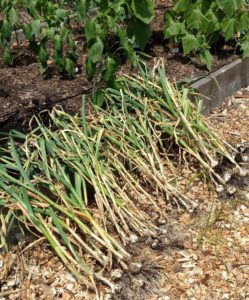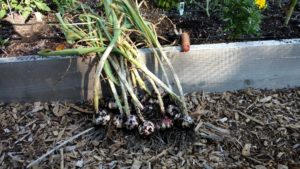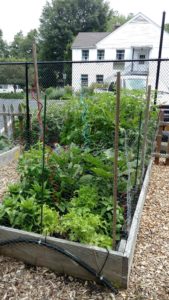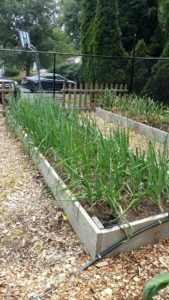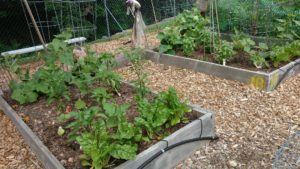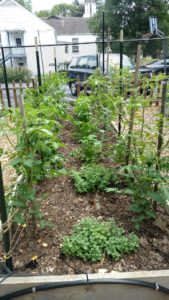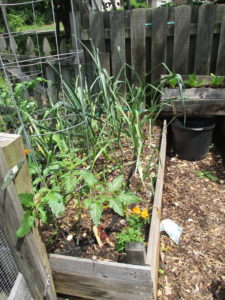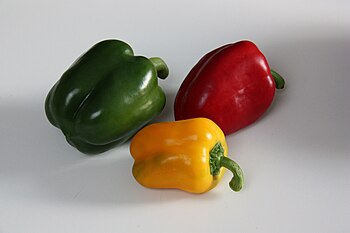The Mediterranean Lifestyle seems to fit perfectly with today’s move towards sustainable living. Here’s a look at how we’re making the connection. It’s a revolution that happens one household at a time.
About two years ago I had an old and diseased Ash tree removed from my side yard. The cleaned space, loaded with sunlight, allowed me to put up a raised bed garden. I set out to use only recycled and organic materials and was able to achieve my goal through the use of materials found locally.

Not an easy job, but these guys were good.

This picture doesn’t do justice to the size of this old Ash tree.

This guy is under paid!
The pictures below tell the story. The beds are constructed from pallets and discarded lumber found at work sites. The soil is 100% organic, composed of compost, coco core, worm castings and rock dust,sold commercially as Azomite. More on my raised bed soil mix in a future post.
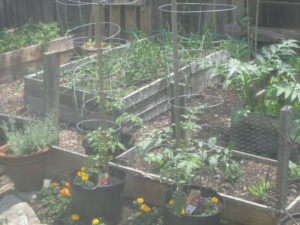
All the beds are made with recycled materials. Right down to the nails.

I save space by growing in pots as well. Here are a few of my 10 tomato plants
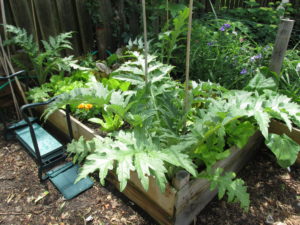
I’m trying artichokes for the first time. Lettuce gets plenty of shade from these plants thus extending their season.
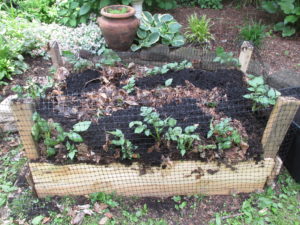
A potato box, again made with recycled material.
I grow my tomatoes in pots using the same soil breakdown and it works great for these shallow rooted plants. This year I added a potato box, again made from recycled materials. I hill the potato plants using leaf mold made from collected leaves and grass clipping. I use zero chemicals on my lawn and flower beds so I have little issue with the leaves and clippings. Once the growing season is over I plan to return the material in the potato box to the compost pile. A 100% sustainable and recyclable soil mix.

Herb pots get plenty of sun on the back deck.
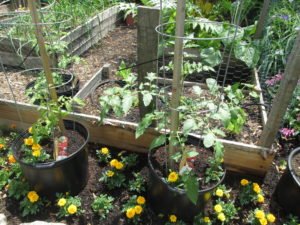
Marigolds help keep insects at bay and add color to the garden.
So, moving forward this is what you can expect from GraciesRavioli.com. We’re going to take you out of the Supermarket and into the Farmers Market. We’re lead you away from microwavable meals and get you back in the kitchen preparing quick, wholesome family friendly meals. We’re going to show how you can make a difference in what you feed your family and help you grow it.
Join the revolution, that starts with food, one household at a time!





